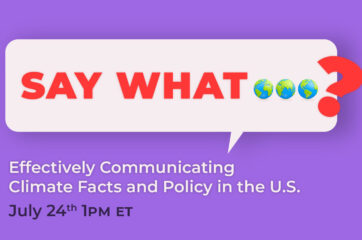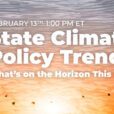The COVID-19 pandemic is an injustice that is intersectional at its core. The inequities associated with this crisis are innately tied to specific preexisting disparities in public health, workers’ rights, housing stability, and more, but one critical and commonly overlooked element of this intersection is environmental injustice.
Environmental injustice refers to environmental harms, such as air and water pollution and toxic chemical exposure, that disproportionately burden low-income and Black, Indigenous, and people of color (BIPOC) communities. Especially relevant to COVID-19, an airborne virus which affects the respiratory and cardiovascular systems, are environmental injustices related to air pollution. Decades of racist environmental action, and equally racist policy inaction, has led to astronomical infection and mortality rates from COVID-19 in BIPOC communities.
Setting the Stage: The Facts about Environmental Racism
Even before COVID-19 hit, BIPOC communities faced centuries of systemic racism that directly created and perpetuated inequities in health outcomes. Environmental racism, specifically, has contributed to much of this inequitable burden, as communities of color are disproportionately targeted as sites for polluting facilities, leading to increased levels of air pollutants that adversely affect human health.
Since a landmark study in 1987 showed that race, not income, proved to be the most significant variable in the siting of hazardous waste facilities, decades of research from across the country has continued to validate this claim. Black households with annual incomes between $50,000 and $60,000 tend to be in more polluted neighborhoods than White households with under $10,000 in annual income. In Texas, hydraulic fracturing wells are more than twice as common in areas with over 80 percent BIPOC populations. Levels of exposure to airborne volatile organic compounds, such as benzene and chloroform, have been found to be 52 percent and 37 percent higher for Mexican Americans and non-Hispanic Black people, respectively, than non-Hispanic White people even after adjusting for socioeconomic factors.
These environmental burdens are even more inequitable when pollution responsibility is factored in; in the United States, fine particulate matter pollution is disproportionately caused by the consumption of goods and services by White Americans. On average, non-Hispanic White people experience around 17 percent less air pollution than is caused by their consumption, while Black and Hispanic people are exposed to a respective 56 percent and 63 percent more. Even as overall air pollution exposure decreases across each of the three groups, this “pollution inequity” remains high.
Connecting Environmental Racism and Community Health
We know that BIPOC communities have a disproportionate burden of environmental harms, including air pollution, and we also know that this causes numerous adverse human health impacts. Air pollution affects lung development and is implicated in the development of emphysema, asthma, and other respiratory diseases, and it also impacts the cardiovascular system, impairing blood vessel function and increasing the risk of cardiovascular disease. The direct link between air pollution and adverse health outcomes is clear, and due to environmental racism, BIPOC communities suffer disproportionately from respiratory, cardiovascular, and other diseases.
In the U.S., the highest rates of asthma are found among Black and Indigenous people, with rates of 10.9 percent and 12.0 percent, respectively, as compared to 7.7 percent in White people. This data tells us that, as compared to White people, asthma is 42 percent more common in Black people and 56 percent more common in Indigenous people. Black Americans also have higher death rates from heart disease and multiple cancers than White Americans.
In addition to increased health burdens, BIPOC communities tend to have less access to effective healthcare, as 10.6 percent of Black Americans, 14.9 percent of American Indians and Alaska Natives, and 16.1 percent of Hispanic Americans are uninsured as compared with only 5.9 percent of non-Hispanic White Americans.
COVID-19’s Disproportionate Impact as a Function of Environmental Racism
There’s no question that BIPOC communities have a disproportionate burden of environmental harms and their associated health risks. In combination with other socioeconomic factors tied to structural racism in the U.S. — such as access to healthcare, socioeconomic status, and exposure to COVID-19 related to occupation — they also experience the inequitable and adverse impacts of the pandemic. Several studies have revealed higher COVID-19 infection and mortality rates in areas with higher air pollution levels, and this is reflected in the high death rates for BIPOC communities. As compared to non-Hispanic White people, Black people have two times the COVID-19 death rate; Hispanic people have 2.3 times the death rate; and Indigenous people have 2.4 times the death rate.
Even as air pollution was contributing to infection and mortality rates, regulatory agencies relaxed environmental policies. In the same month that COVID-19 was declared a national emergency, the U.S. Environmental Protection Agency suspended penalties for companies with certain environmental violations if they cited COVID-19 as their excuse for noncompliance. Although this policy was reversed after public outcry, federal agencies continued to roll back or relax enforcement of environmental policies across sectors. As BIPOC communities already have increased levels of air pollution, the policy response likely impacted them disproportionately.
All climate policy actors, whether in roles related to activism, legislation, research, business, or otherwise, must recognize the impact of environmental injustice in all aspects of our lives but especially in the ongoing COVID-19 pandemic. Environmental justice considerations must be intertwined with public health responses, as the two sectors are inextricably connected. Without a robust environmental justice focus in policies at the federal, state, and local levels, every disaster in our future will result in even more suffering and loss — and as the COVID-19 pandemic and climate change continue to rear their ugly heads, we can certainly expect more crises on the horizon.









